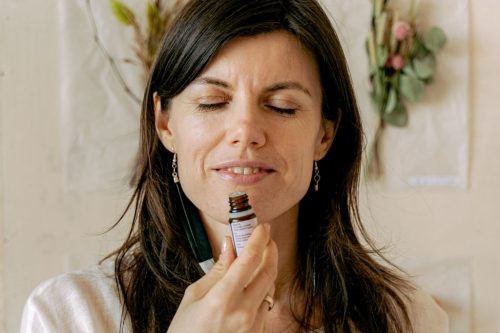Estimated reading time: 6 minutes
Responsibility OCD can quietly take hold of your child’s life—sometimes so gradually, you don’t even notice it at first.
Maybe they keep asking, “Are you sure I didn’t hurt someone?” after bumping into a classmate. Or they won’t play their favorite video game anymore because they think it might make something bad happen. Their brain is stuck in overdrive, warning them about danger that isn’t really there.
As a parent, I truly understand how hard it is to watch—but there are ways to help them feel safe and calm again. But first, let’s understand what responsibility OCD is.
What is Responsibility OCD?
OCD can show up in all kinds of ways—and when it takes the shape of Responsibility OCD, it can quietly steal your child’s peace of mind. These kids feel like it’s their job to keep everyone safe, follow every rule perfectly, and make sure nothing bad ever happens.
Even small things—like forgetting to say thank you or bumping into someone—can trigger hours of worry.
Their brain gets stuck in a loop, convincing them they’re a bad person, but in reality it’s about a brain that’s sending false alarms
Core fears in Responsibility OCD often include:
- Harming someone physically or emotionally
- Making a mistake with serious consequences
- Being responsible for something awful happening
- Breaking rules or falling short of expectations
- Not being a “good” or moral person
Anxiety builds until kids feel they have to act out rituals or mental habits just to calm down. These compulsions might seem like a quick fix but actually fuel the cycle and keep worries alive.
Understanding the symptoms, triggers, and patterns is the first step toward helping your child break free from this cycle. With proper treatment, they can learn to tolerate uncertainty, reduce compulsive behaviors, and rebuild confidence.
What are Common Responsibility OCD Symptoms?

Kids and teens with Responsibility OCD often grapple with intense thoughts about doing something wrong—even when nothing actually happened. Their minds get stuck on “what ifs,” making them feel like they must prevent bad things from happening or else it’ll all be their fault.
They create routines or mental habits to calm down—but those just make the cycle stronger. Here are some common patterns to look for:
1. Inflated Sense of Responsibility
They believe, deep down, that they’re responsible for preventing harm—even things far outside their control. This sense of personal obligation feels constant and overwhelming.
2. Intrusive and Obsessive Thoughts
These kids are stuck in loops of upsetting, unwanted thoughts. They worry they’ve done something wrong, might hurt someone, or made a huge mistake—when in reality, everything’s fine.
3. Fear of Becoming a “Bad Person”
There’s a deep-rooted fear of moral failure. Even small mistakes can feel catastrophic, like they’ve just proven they’re not a good person.
4. Compulsive Checking
To ease that anxiety, they engage in compulsive checking behaviors and could involve regular OCD-like behaviors like repeatedly checking doors, locks, lights, homework, you name it. Some even knock on wood or repeat phrases to “cancel out” bad luck.
5. Excessive Reassurance-Seeking
They ask over and over: “Are you sure I didn’t hurt anyone?” or “Do you think I messed up?” This need for reassurance becomes a ritual in itself.
6. Avoidance of Specific Actions
Some kids start avoiding tasks altogether—schoolwork, social situations, even caring for pets—just in case something goes wrong because of them (Starcevic et al., 2011).
7. Heightened Anxiety
Anxiety becomes a constant companion. And it isn’t just mild worry—it’s intense, relentless fear triggered by everyday situations.
8. Safety Behaviors
They might develop specific habits—mental or physical—to feel “safe.” These rituals might reduce anxiety temporarily, but in the long run, they feed the OCD cycle and can even increase their sense of danger (Van Uijen & Toffolo, 2015).
9. Constant Need for Reassurance
Some kids ask the same question ten different ways, all day long. They’re looking for relief, but they never really feel better.
Responsibility OCD can sneak into all areas of life—school, friendships, daily routines—and leave kids feeling stuck and misunderstood.
But here’s the good news: when you calm the brain, you unlock your child’s potential. That’s where healing starts.
How Do You Treat Responsibility OCD?
Responsibility OCD doesn’t just show up out of nowhere. It’s often tied to a few different factors working together:
- Genetics
- Biology
- Environmental stressors
Diagnosing Responsibility OCD isn’t always straightforward, but mental health professionals know what patterns to look for.
Here’s what goes into a solid evaluation:
- Identifying obsessive thoughts
- Noticing compulsive behaviors
- Spotting an inflated sense of responsibility
- Ruling out other OCD subtypes
- Distinguishing from other mental health disorders
- Checking for co-occurring challenges (low self-esteem, fear of failure, or people-pleasing patterns)
Helping a child or teen with Responsibility OCD starts with the right treatment.
Here’s what effective treatment usually involves:
Cognitive Behavioral Therapy (CBT)
This therapy helps kids challenge distorted thinking patterns that fuel their OCD. It teaches them how thoughts, feelings, and actions connect—so they can break the cycle.
Exposure and Response Prevention (ERP)
ERP is a specialized type of CBT. It gently exposes kids to situations that trigger their obsessive thoughts while helping them resist the urge to do compulsive behaviors.
Gradual Exposure to Triggers
This step-by-step process builds confidence. Over time, repeated exposure reduces anxiety and helps the brain learn that feared outcomes don’t actually happen (Himle & Franklin, 2009).
Prevention of Compulsions
Kids learn tools to sit with the discomfort without performing their usual rituals—whether it’s asking for reassurance, checking, or mental reviewing.
Parental Support and Coaching
Caregivers often get involved to reduce accommodation behaviors at home, which can reinforce the OCD cycle.
This kind of structured therapy helps children and teens rewire their anxious brains—so they can feel safer, more confident, and ready to face the world without fear steering the wheel.
How to Address the Struggles with Responsibility OCD?

Living with Responsibility OCD is no small thing—it can sneak into every corner of life. From schoolwork to friendships to simple daily decisions, that constant fear of making a mistake or causing harm can feel crushing. So, how do we lighten that load?
Start with these three pillars:
- Coping strategies
- A strong support system
- Family education
Teaching kids and teens how to cope—without falling into compulsive behaviors—is key. But they also need people around them who “get it” like loved ones who don’t accommodate OCD behaviors but support the child’s progress.
Raising awareness about Responsibility OCD helps bust the myth that it’s “just worrying too much.” This isn’t about being overly cautious. It’s about feeling morally responsible for everything—even when logic says otherwise.
And here’s something every child with OCD needs to hear: You can talk back to those fears. It’s OCD trying to boss you around.
Learning how to respond to it with confidence and clarity—that’s what leads to change. Also, support from loved ones in reinforcing coping skills and not accommodating the fear is a big deal.
Addressing OCD behaviorally with a combination of calming the nervous system with holistic treatments is key to overcoming OCD. And when families stop tiptoeing around the OCD and start standing beside their child—calm, consistent, and educated—that’s when real progress happens.
Parent Action Steps
FAQs
What makes Responsibility OCD different from other types of OCD?
Responsibility OCD centers around an inflated fear of causing harm, making mistakes, or being morally wrong. Unlike contamination or symmetry OCD, the compulsions often focus on reassurance, checking, and avoidance to prevent imagined negative outcomes.
Can children outgrow Responsibility OCD on their own?
While some mild anxiety-related behaviors may fade, Responsibility OCD typically requires treatment. Without proper support, symptoms can worsen over time or shift into other OCD subtypes.
What does Exposure and Response Prevention (ERP) therapy involve?
ERP helps children face anxiety-triggering situations without engaging in compulsions. Over time, this reduces the intensity of obsessive thoughts and builds resilience against fear-based behaviors.
How can I support my child without accommodating OCD behaviors?
Set loving but clear boundaries around rituals and reassurance-seeking. Educate yourself, stay consistent, and work with a therapist to model healthy responses that reinforce long-term recovery.
Citations
Himle, M. B., & Franklin, M. E. (2009). The More You Do It, the Easier It Gets: Exposure and Response Prevention for OCD. Cognitive and Behavioral Practice, 16(1), 29–39. https://doi.org/10.1016/j.cbpra.2008.03.002
Starcevic, V., Berle, D., Brakoulias, V., Sammut, P., Moses, K., Milicevic, D., & Hannan, A. (2011). The Nature and Correlates of Avoidance in Obsessive–Compulsive Disorder. Australian & New Zealand Journal of Psychiatry, 45(10), 871–879. https://doi.org/10.3109/00048674.2011.607632
Van Uijen, S. L., & Toffolo, M. B. J. (2015). Safety Behavior Increases Obsession-Related Cognitions About the Severity of Threat. Behavior Therapy, 46(4), 521–531. https://doi.org/10.1016/j.beth.2015.04.001
Dr. Roseann is a mental health expert who frequently is in the media:
- Insider: What is OCD?
- Single Care Controlling the uncontrollable: Living with OCD during a pandemic
- Holistic Counseling Podcast: Effective Treatments for OCD
- Epidemic Answers: Neurofeedback for ADHD, anxiety, OCD and mood
- Cai Grahm: Is it anxiety or OCD?
- BCIA: Calming the OCD Brain with Neurofeedback and ERP Therapy
- Hope for Anxiety and OCD: Sudden Onset OCD
- Integrative Practitioner: Integrative Approaches to Treating OCD
- HappiHuman: Is it an Eating Disorder or OCD?









